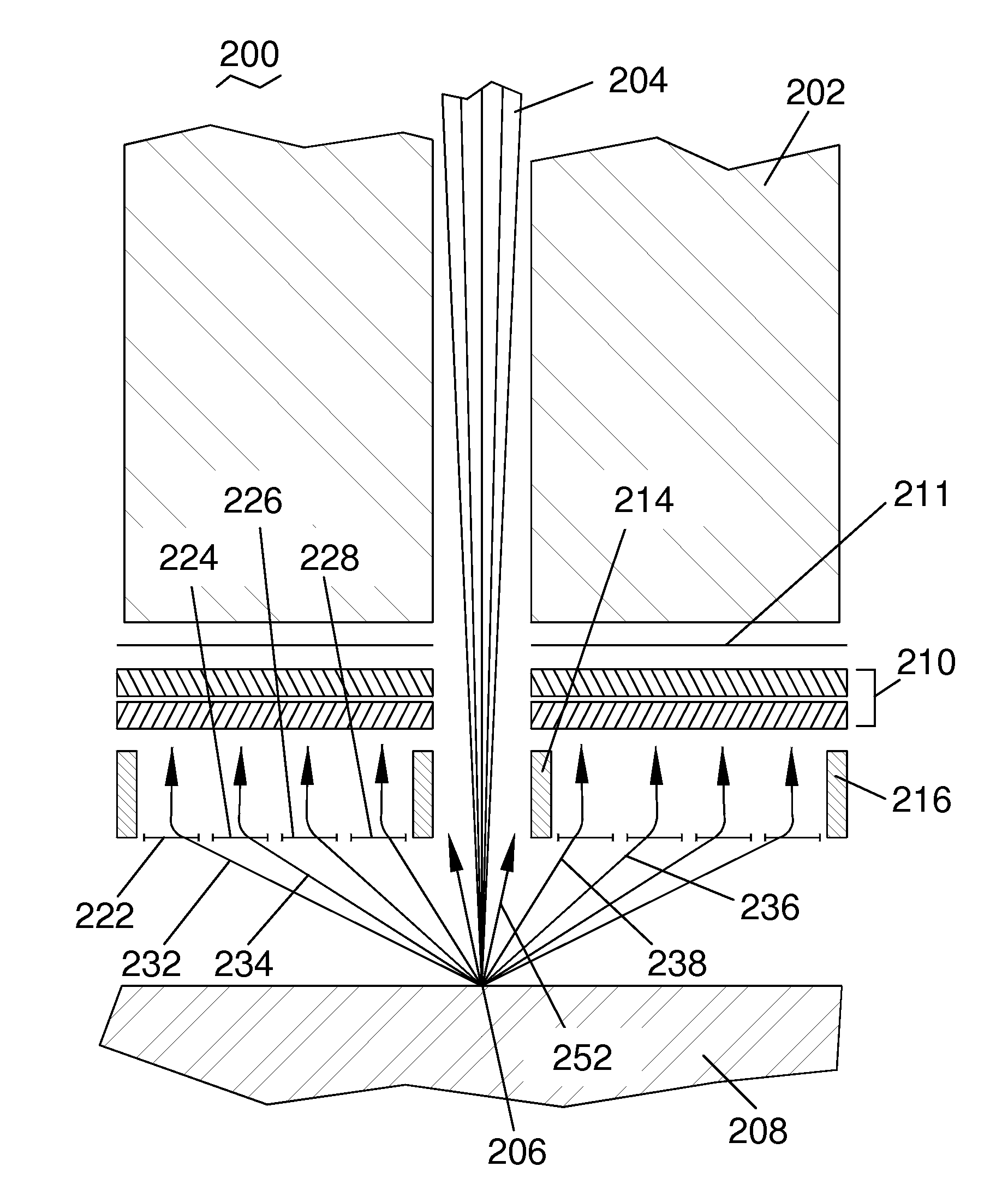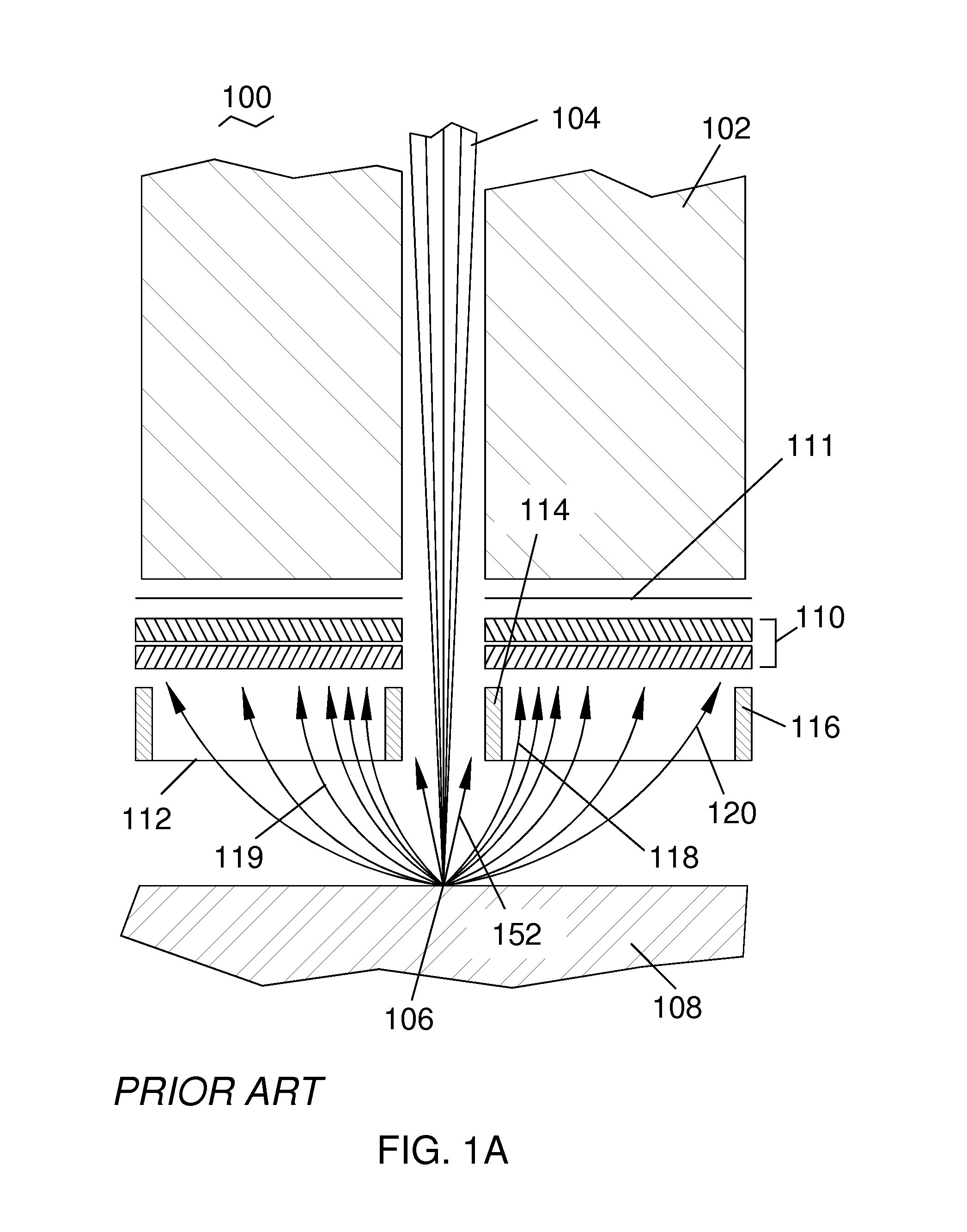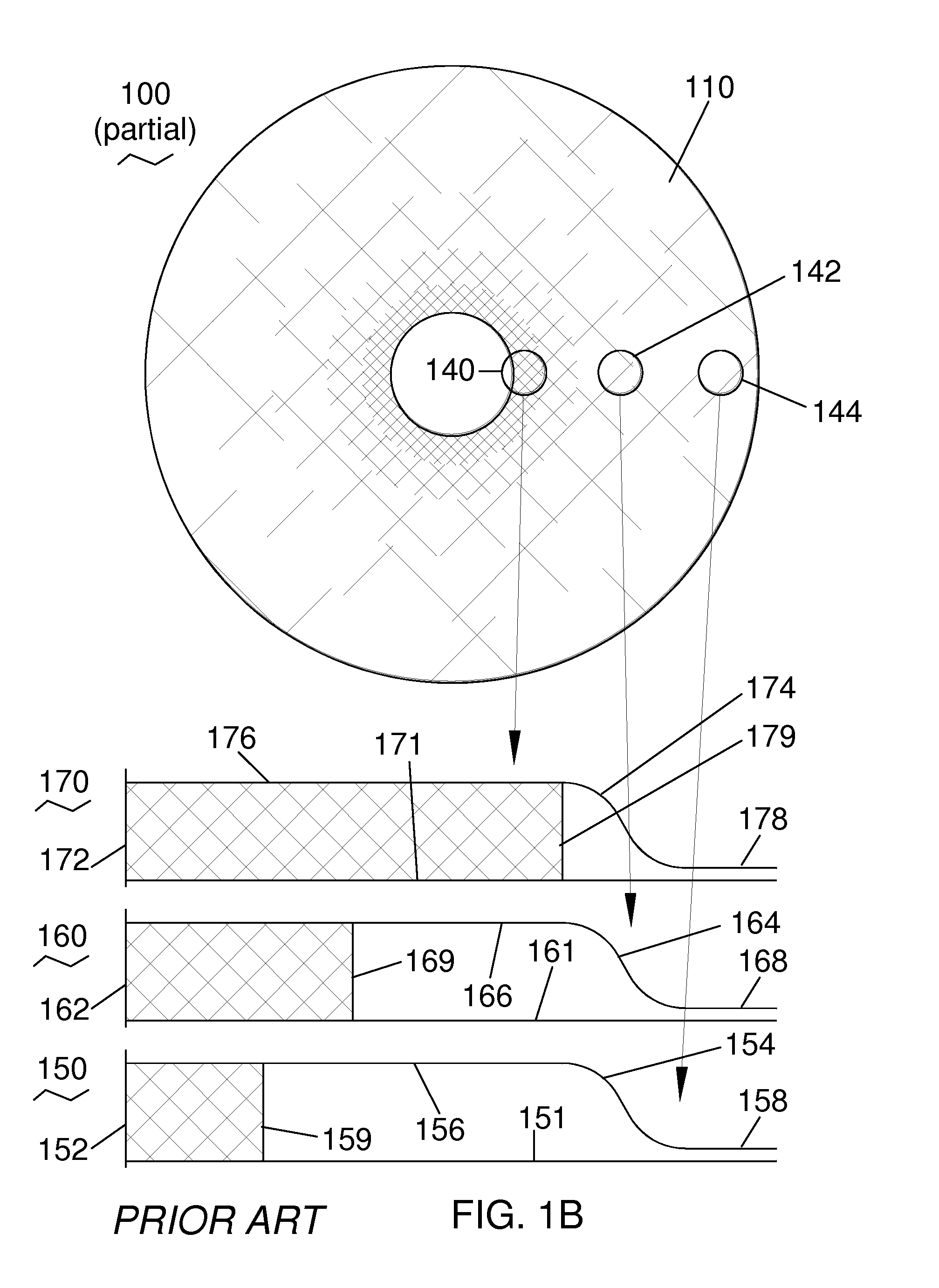Distributed Potential Charged Particle Detector
a potential charge and detector technology, applied in the field of focused charged particle systems, can solve the problems of affecting the life of secondary detectors, affecting the efficiency of secondary detectors, and difficult to avoid, so as to improve the lifetime of secondary particle detectors
- Summary
- Abstract
- Description
- Claims
- Application Information
AI Technical Summary
Benefits of technology
Problems solved by technology
Method used
Image
Examples
third embodiment
[0023]In a third embodiment, a multiplicity of deflector electrodes is positioned between the collection grid and the target, again with the purpose of creating an electric field needed to make the secondary particle distribution at the detector more uniform.
[0024]Embodiments of the present invention may also be used in cases where the detector is used in an imaging mode, as illustrated herein for a transmission electron microscope (TEM—FIG. 9) and a scanning transmission electron microscope (STEM—FIG. 10). In these applications, it is often the case that the full detector area cannot be used for imaging due to considerations in the optical designs of the columns. Thus, the particle distributions at the detector are again non-uniform (often more concentrated around the symmetry axis of the column). Embodiments of the present invention may enable more of the detector area (typically areas farther from the symmetry axis of the column) to be used for imaging, thereby increasing the det...
first embodiment
[0040]FIG. 2B shows a portion of the charged particle detector 200 of the present invention from FIG. 2A. Detector 210 is shown in a view looking up at the input signal collection surface (lower surface of detector 210 in FIG. 2A). The relative uniformity of the input signal current across the collection area of detector 210 enabled by the present invention is illustrated using uniform cross-hatched shading across the full collection area of detector 110 (compare with FIG. 1B). Three regions 240, 242, and 244, of the detector 210 at the center, middle and edge, respectively, are highlighted.
[0041]Starting at the inner edge 240 of the central hole in detector 210 (where ring 214 in FIG. 2A is attached), graph 270 is a plot of the local signal gain 272 as a function of the time-integral 271 of the output (i.e., amplified) signal current from region 240 over the lifetime of detector 210. As shown, gain curve 274 has an initial high level 276, which is maintained over a certain total ti...
PUM
 Login to View More
Login to View More Abstract
Description
Claims
Application Information
 Login to View More
Login to View More - R&D
- Intellectual Property
- Life Sciences
- Materials
- Tech Scout
- Unparalleled Data Quality
- Higher Quality Content
- 60% Fewer Hallucinations
Browse by: Latest US Patents, China's latest patents, Technical Efficacy Thesaurus, Application Domain, Technology Topic, Popular Technical Reports.
© 2025 PatSnap. All rights reserved.Legal|Privacy policy|Modern Slavery Act Transparency Statement|Sitemap|About US| Contact US: help@patsnap.com



